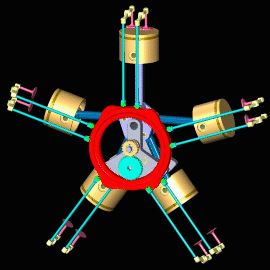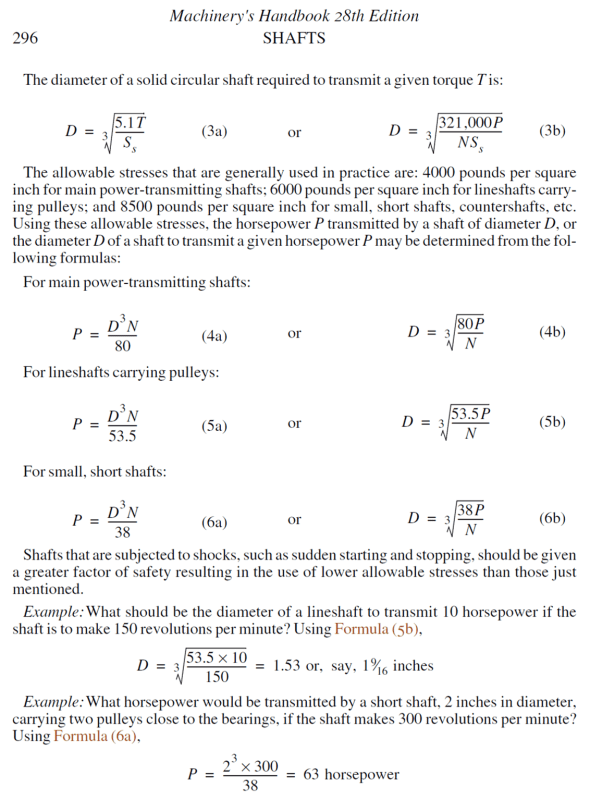Howdy,
Single throw crank shaft with articulated rods. 5 cylinder radial. I've balanced the crank inertia loads the best I can variable about 871.8 lbs with the CG moving out max .155 inch... I tried it doesn't get better than that. I'm guessing that's kinda rough but it's a big engine. 450in^3
Now what I'm curious about... I have an actual gas pressure plot from a nearly identical cylinder (It's form exactly what you would expect for a 4 stoke SI engine)It's peak pressure is 880psi! That results in a parallel cylinder force of 18,100lbs!!!
If I take the average pressure of that entire actual gas pressure plot for 720° I get 117.25psi.
and finally for fun my estimated IMEP is 214 PSI.
My only design reference that gets into this level of detail for determining bearing loads I could find... completely ignored the Peak pressure force looked to an "Average" force of which I cant derive from the table data how the "average" value was obtained.
Is that peak pressure a shock load that happens so fast the bearing doesn't really "see it"... other? I would like to understand their reasoning to make a sound engineering judgement for bearing selection.
Thanks!
Single throw crank shaft with articulated rods. 5 cylinder radial. I've balanced the crank inertia loads the best I can variable about 871.8 lbs with the CG moving out max .155 inch... I tried it doesn't get better than that. I'm guessing that's kinda rough but it's a big engine. 450in^3
Now what I'm curious about... I have an actual gas pressure plot from a nearly identical cylinder (It's form exactly what you would expect for a 4 stoke SI engine)It's peak pressure is 880psi! That results in a parallel cylinder force of 18,100lbs!!!
If I take the average pressure of that entire actual gas pressure plot for 720° I get 117.25psi.
and finally for fun my estimated IMEP is 214 PSI.
My only design reference that gets into this level of detail for determining bearing loads I could find... completely ignored the Peak pressure force looked to an "Average" force of which I cant derive from the table data how the "average" value was obtained.
Is that peak pressure a shock load that happens so fast the bearing doesn't really "see it"... other? I would like to understand their reasoning to make a sound engineering judgement for bearing selection.
Thanks!


![[neutral] [neutral] [neutral]](/data/assets/smilies/neutral.gif) Since my six cylinder radial two-stroke engine is far more balanced than the single cylinder GX200, I feel the selected bearing is more than adequate. It's just not a very pretty method. I hang my head in shame.
Since my six cylinder radial two-stroke engine is far more balanced than the single cylinder GX200, I feel the selected bearing is more than adequate. It's just not a very pretty method. I hang my head in shame. ![[mad] [mad] [mad]](/data/assets/smilies/mad.gif)
